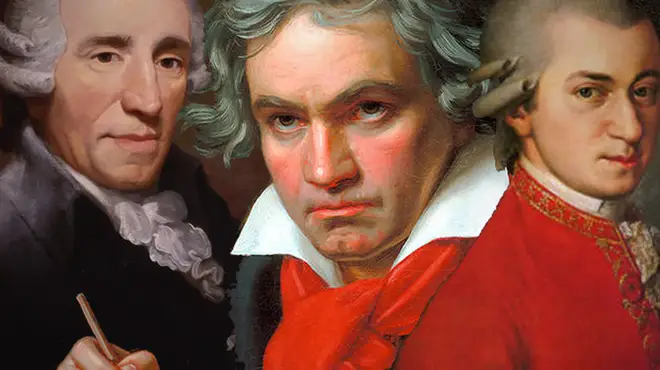On Air Now
Classic FM Breakfast with Dan Walker 6:30am - 9am
23 October 2020, 17:04

We unpick the definition of ‘Viennese School’ and explore why it’s so important to classical music history.
Is it a university? Or a waltz with an educational tinge? No, ‘Viennese School’ actually refers to a period of classical music history, between roughly 1750 and 1830.
The Viennese School is a term that captures the legacy of three leading composers of the Classical and early Romantic period.
The term was first used by Austrian musicologist Raphael Georg Kiesewetter in 1834, when he described Haydn and Mozart with it.
Later musicologists adopted it, and added Beethoven to the list in time. Sometimes nowadays you’ll hear ‘First Viennese School’ where someone is differentiating from the ‘Second Viennese School’, which is a whole other thing...
Read more: Where to start with the Second Viennese School >

Marriner at 90: Mozart Piano Concerto No. 20
Joseph Haydn (1732–1809), Wolfgang Amadeus Mozart (1756–1791) and Ludwig van Beethoven (1770-1827) are all credited with completely transforming the musical forms they composed in.
Sometimes Schubert is included too, but the crux of the idea of the Viennese School is these leading composers that were writing music – and changing its course – in the city of Vienna in the 18th and 19th centuries.
What we mean by ‘classical music’ really centres around this time period in many ways, and it’s the Austrian city of Vienna, in particular, that bred the creativity and extensive music patronage that makes it so central to music history.
Read more: Boy exclaims ‘wow’ after a performance of Mozart >

Orchestra seeks boy who exclaimed 'Wow' after performance of Mozart
Vienna really was the place to be when it came to patronage. Important people like Prince Nikolaus Esterházy, Baron Gottfried van Swieten and Rudolf, Crown Prince of Austria were famously generous patrons of the arts, and supportive of the Viennese School composers specifically.
The traditional symphony orchestra expanded and became cemented into what we think of as an orchestra today. And the familiar tonal, major-minor harmony, established in the Baroque period, really bedded in.
Haydn, Mozart and Beethoven really tested and expanded musical forms they used, and they cemented genres with the sonata or ‘first movement’ form, including symphonies and sonatas.
Sonata form is characterised by a first section, the ‘exposition’ that is divided into a first half and second half, before being followed by a development – essentially an extended passage that really plays with the two main ideas from this opening section – and finally a ‘recapitulation’, or a recap of the first section to remind listeners what the piece is all about and get us back to where we started out music-wise. There’s sometimes an introduction too.
The form is used for first movements of symphonies, sonatas and string quartets.
Read more: Music theory, explained with Oreos >

Haydn: Symphony nº 104 "London" - Dima Slobodeniouk - Sinfonica de Galicia
Melody is king in the music of Viennese School and composers like Haydn and Mozart became masters at accompanying their fine melodies with complimentary parts that are no less interesting, and just as important.
A type of musical accompaniment called ‘obbligato’ – from ‘obligation’ in Italian – was a defining feature of the Viennese School: while a beautiful and well-structured Mozart melody soars, beneath it other parts work steadfastly away to accompany it and reinforce the music’s harmony (the key centre it is in).
Read more: 6 irresistibly clever cartoons to explain classical music theory >

Ensemble Connect: Mozart Flute Quartet in D Major, K. 285 (Complete)
While the Medieval and Renaissance periods of music centred around worship and sacred settings, the Baroque and Classical eras saw more of a burgeoning of secular music, and music and art made for its own sake.
This is something that was cemented by the time Viennese School classicism was established, and the ensembles that could really come into their own were the string quartet, the traditional symphony orchestra and other popular chamber ensembles we still see in concert today.

The Sacconi Quartet play Beethoven
The pinnacle of Viennese School composition can be heard in Haydn’s symphonies, Mozart’s concertos and choral works, and Beethoven’s string quartets and symphonies. If you’re keen to hear where Schubert might come in, try his symphonies as well.